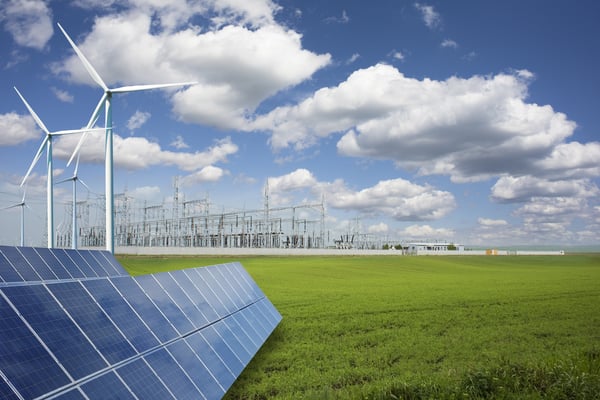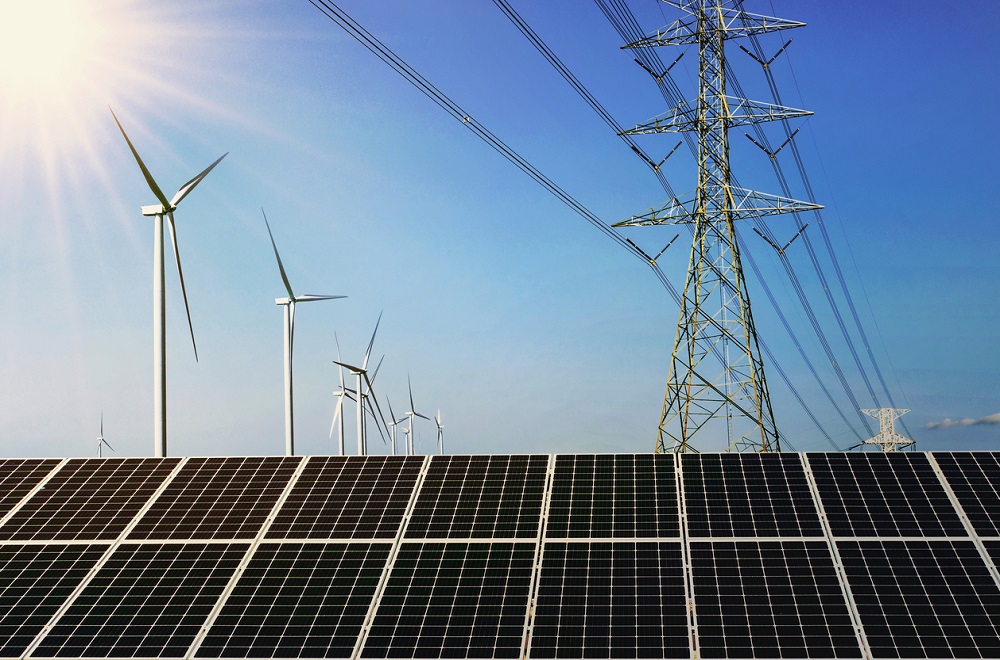By Nashvinder Singh and Jigeesha Upadhaya
Battery energy storage systems (BESS) are the future of support systems for variable renewable energy (VRE) including solar PV and key to helping our world transition to renewable energy. For solar PV generators and the industry on the whole, there is no hotter topic.
In Part One of this article, we covered BESS basics. Now, let's take a deeper dive into how BESS systems help support the electrical grid.
How are BESS systems helpful in power grid functioning? What are some of the grid support functions can they facilitate?
BESS systems can provide a range of benefits and support functions to the power grid, including:
- Frequency regulation
- Ancillary services/grid stability – BESS systems can charge and discharge quickly, making them ideal for balancing the grid on demand or production side.
- Voltage support/stabilization
- Emergency response systems – BESS systems can provide emergency response services of frequency regulation, ramping and voltage support in a manner that is close to energy reliability services from synchronous facilities.
- Operating reserves
- Reduction of grid congestion
- Ramp rate control
- Energy arbitrage
- Capacity firming
- Peak shaving
- Black start
We'll look at most of these in greater detail throughout the article.
What are the physical components that make up BESS?
A typical BESS includes:
- Battery modules, which are connected in series and parallel to get the required capacity. The actual battery and lithium-ion cells react together.
- Storage enclosure with thermal management
- Battery management system (BMS)
- Power conversion system (PCS)
- Energy management system (EMS)
Let's look at the latter three in more depth.
Battery Management System (BMS)
The battery management system (BMS) continually monitors the battery's output, voltage, temperature, health, fire warning and state of charge (SOC). It also regulates the charging and discharging power based on the input signal.
Power Conversion System (PCS)
This system handles the AC to DC conversion or DC to AC conversion, which requires a bi-directional inverter. All the clusters from the battery system are connected to a common DC bus and a further DC bus extended to the PCS.
Energy Management System (EMS)
The energy management system (EMS) is the link between the grid demand and the BMS. It continually monitors what the grid needs and how that required energy can be transferred from the BESS. This is done via control logic. The EMS sends an input signal to either charge or discharge the battery depending on the control logic requirement and SOC of the battery system.
An EMS can also act as an overall energy management system that balances multiple generation resources according to what the grid needs. In a PV + Storage setup, an EMS can balance the outputs from PV and the battery system. It can decide when to start discharging the batteries in order to pump stored power to the grid, and when to stop discharging and start charging again based on the production scenario and customer agreements. The EMS can also be programmed to decide whether the battery system should be charged from the PV resource or from the grid.
What's the control strategy for BESS?
At Nor-Cal, we provide SCADA and EMS solutions for monitoring and controlling BESS systems per site requirements:
- The SCADA system communicates with the BMS to monitor battery health, temperature, fire warnings, output, voltage and SOC. If there is anything going wrong with the battery system, the SCADA system can alert the operator via an alarm. This monitoring helps ensure that the SOC is maintained and continually charged, either via the grid or PV.
- The EMS, as covered earlier, communicates with BMS to meet the grid requirements. It sends an input signal to either charge or discharge the battery as needed, and it gets this information from the control logic requirements. The control logic is executed at the EMS.
The control strategy depends on the primary function and configuration of the BESS. As covered in Part One, a BESS can be utilized as an independent source of energy, co-located with a renewable resource as in a PV + Storage system, or used to augment conventional generation. These require very different control strategies.
The type of BMS is another factor. There are two main types of BMS—centralized and decentralized—and they require different control strategies. The hardware and programming methods differ.
At Nor-Cal, we are able to provide customized control solutions based on the BESS configuration, type and utilization.
What are short term reliability services and longer duration services?
Short term reliability services and longer duration services both have to do with frequency regulation. Frequency is one of the most critical aspects of grid stability.
Short Term Grid Reliability Services
A rise or especially a drop in frequency must be balanced or arrested immediately to keep the grid stable. That's where short term reliability services come in. BESS systems provide what's known as fast frequency response (FFR). FFR is a controlled contribution of electrical power from a generating unit or a power plant that rapidly responds to a frequency change to minimize the imbalance of the synchronous generators. With BESS, FFR can kick in within seconds or subseconds, whereas using a conventional source takes longer. This buys the system more time to get other resources online.
FFR is even more critical now as the generation system moves away from traditional synchronous generators and more renewables come online. The lack of the rotating synchronous generators in the system will make frequency drops even more critical and faster. The faster the frequency drop, the more vulnerable the system will be to failure. FFR, provided by BESS, will be crucial in arresting these frequency drops as quickly as possible.
Longer Duration Grid Reliability Services
BESS also offers primary frequency response (PFR), which is even more important than FFR in the long term. Traditional synchronous power generation involves large rotating turbines, and the rotating energy mass on the grid affects the frequency. Once the FFR buys more time for the conventional generators, PFR helps bring the system back to its normal frequency levels. The system must be supported by a continuous pumping of power, and BESS can contribute to that part of the reliability services.
What's firm capacity?
Firm capacity is the amount of energy available for production/transmission which can be guaranteed to be available at a given time. The variable and intermittent nature of wind and solar mean that the firm capacity can vary. A cloudy day may mean that a solar plant can't generate the amount of power it's supposed to provide to the grid. As more and more renewables come online, that could make the grid vulnerable to intermittency of production.
BESS systems are an excellent resource to firm the capacity of a solar PV or wind plant. If a renewable power plant isn't able to meet what it's supposed to give the grid, stored energy can be used to augment the low production and fill in the gap.
What's energy arbitrage?
Energy arbitrage involves charging the batteries in the BESS when there is low price electricity available for use by the grid, and then discharging the batteries to sell the stored energy when demand and prices are high. It's like stocks—buying low and selling high.
BESS is especially helpful in reducing any curtailment which happens in a solar plant. Instead of having to ramp down production when demand is low, all the extra energy can be stored. Later, when demand is high again, the stored energy can be sold at the peak rate. This allows solar PV generators both to make money and to utilize the full potential of their renewable energy power plant.
How can BESS help with transmission and distribution upgrade deferral?

Demand peaks, especially during the summer months with HVAC systems running, can overload transmission and distribution systems to the point where the grid has to curtail. There is a lot of talk about the need for infrastructure upgrades to these systems—a major and expensive undertaking. While these upgrades will eventually be needed, BESS systems can help support temporary demand peaks using the existing infrastructure. Since they can be located practically anywhere, standalone BESS systems can help the grid and defer these transmission and distribution upgrades until they are the only option or make more sense in terms of ROI.
What's black start and value stacking?
When starting up, large generators need an external source of electricity to perform key functions before they can begin generating electricity for the grid. During normal system conditions, this external electricity can be provided by the grid. After a system failure, however, the grid can no longer provide this power, and generators must be started through an onsite source of electricity such as a diesel generator. This process is known as black start. An onsite BESS can provide this service, avoiding fuel costs and emissions from conventional black start generators.
As system-wide outages are rare, an onsite BESS can provide additional services when not performing black start. BESS can maximize their value to the grid and project developers by providing multiple system services. As some services are rarely called for (i.e., black start) or used infrequently in a given hour (i.e., spinning reserves), designing a BESS to provide multiple services enables a higher overall battery utilization. This multi-use approach to BESS is known as value stacking.
How can Nor-Cal help with integrating BESS for PV projects?
Nor-Cal has a strong track record of success facilitating SCADA and EMS solutions for our customers. We coordinate with manufacturers and integration companies to implement the necessary EMS requirements into our SCADA systems to meet utility and ISO requirements.
If you need a custom solution that can help you take advantage of all the benefits BESS has to offer, contact us today. Whether you need a PV + Storage integration or a standalone BESS, we'd be happy to talk with you about your options. Schedule a call with us today.





